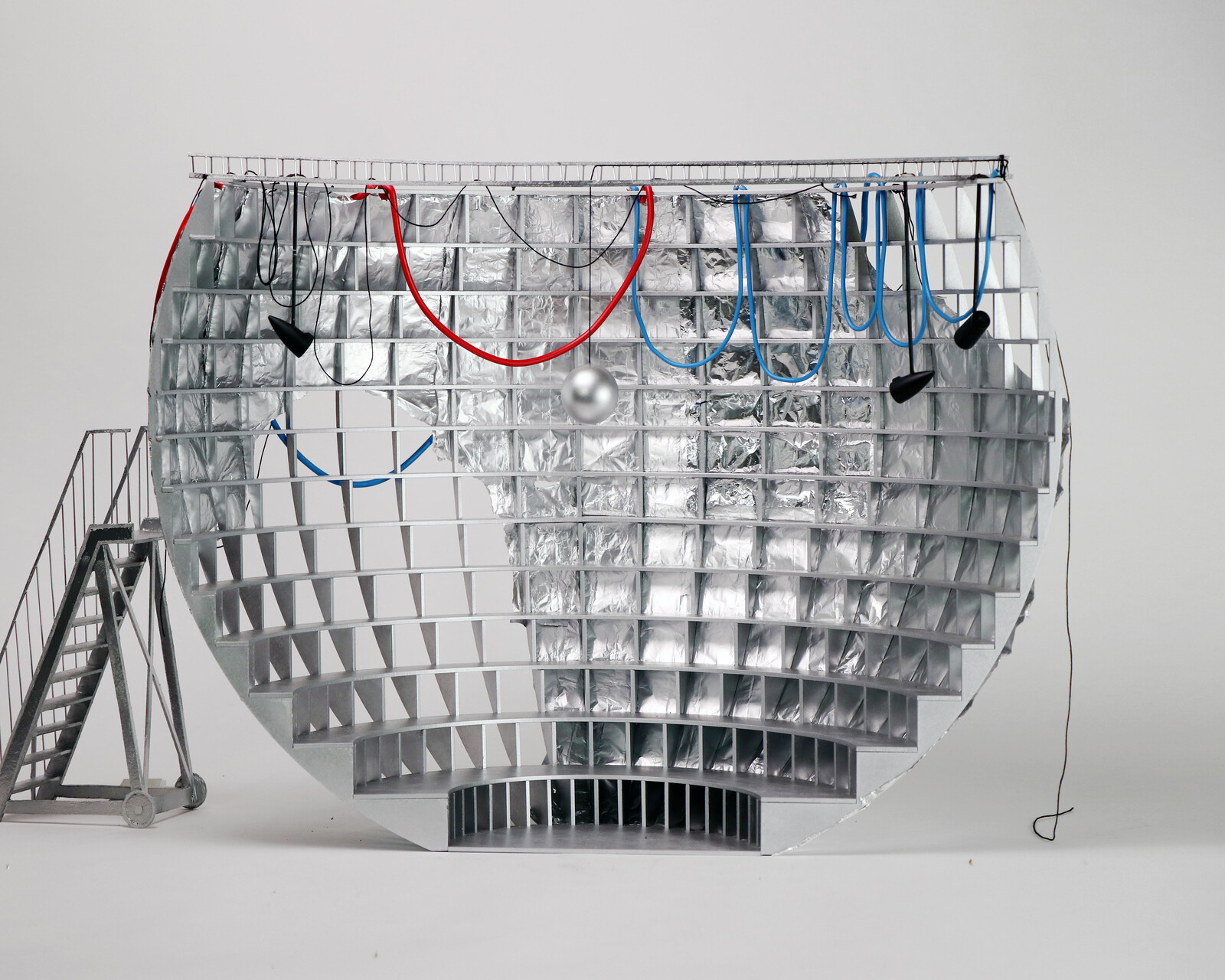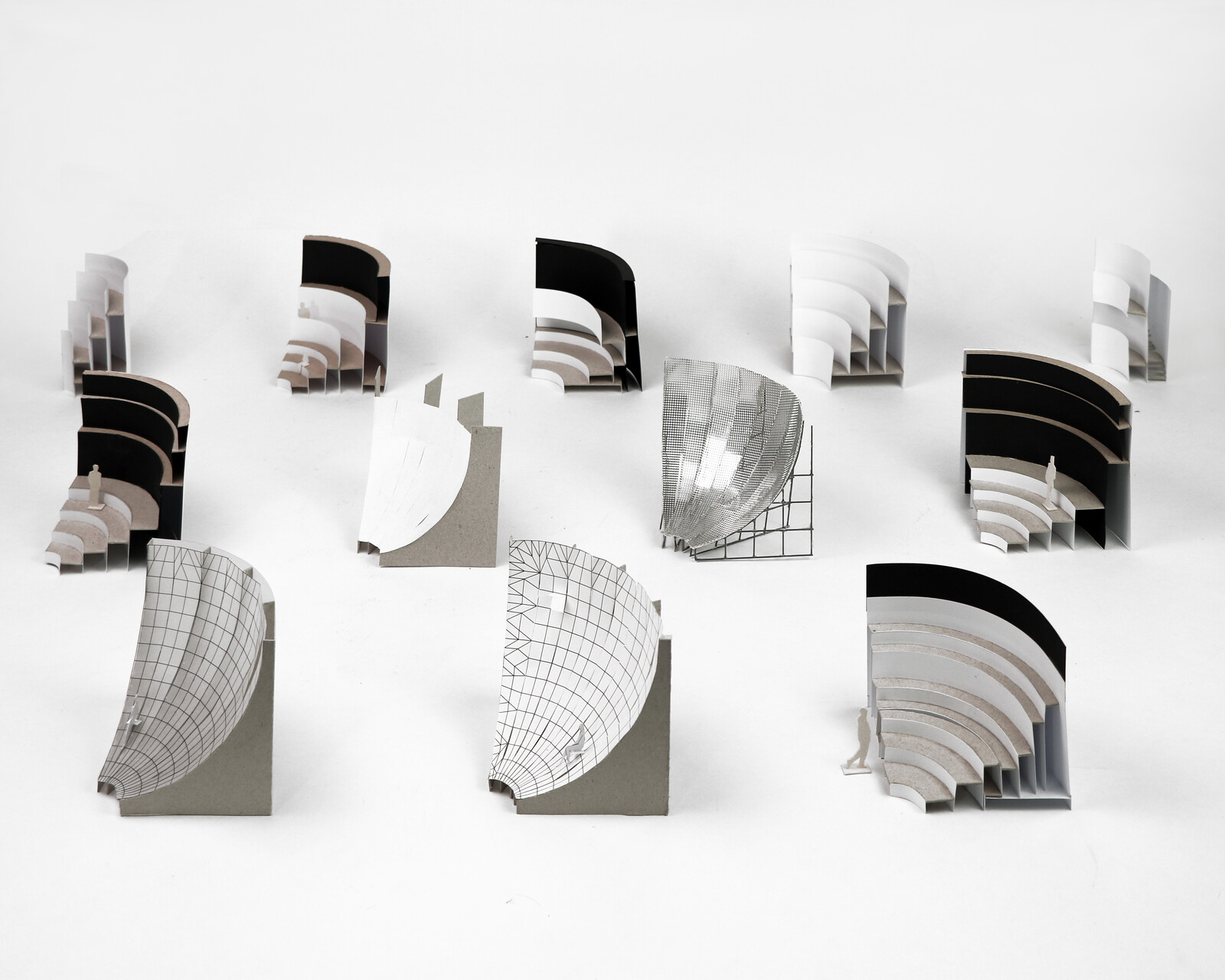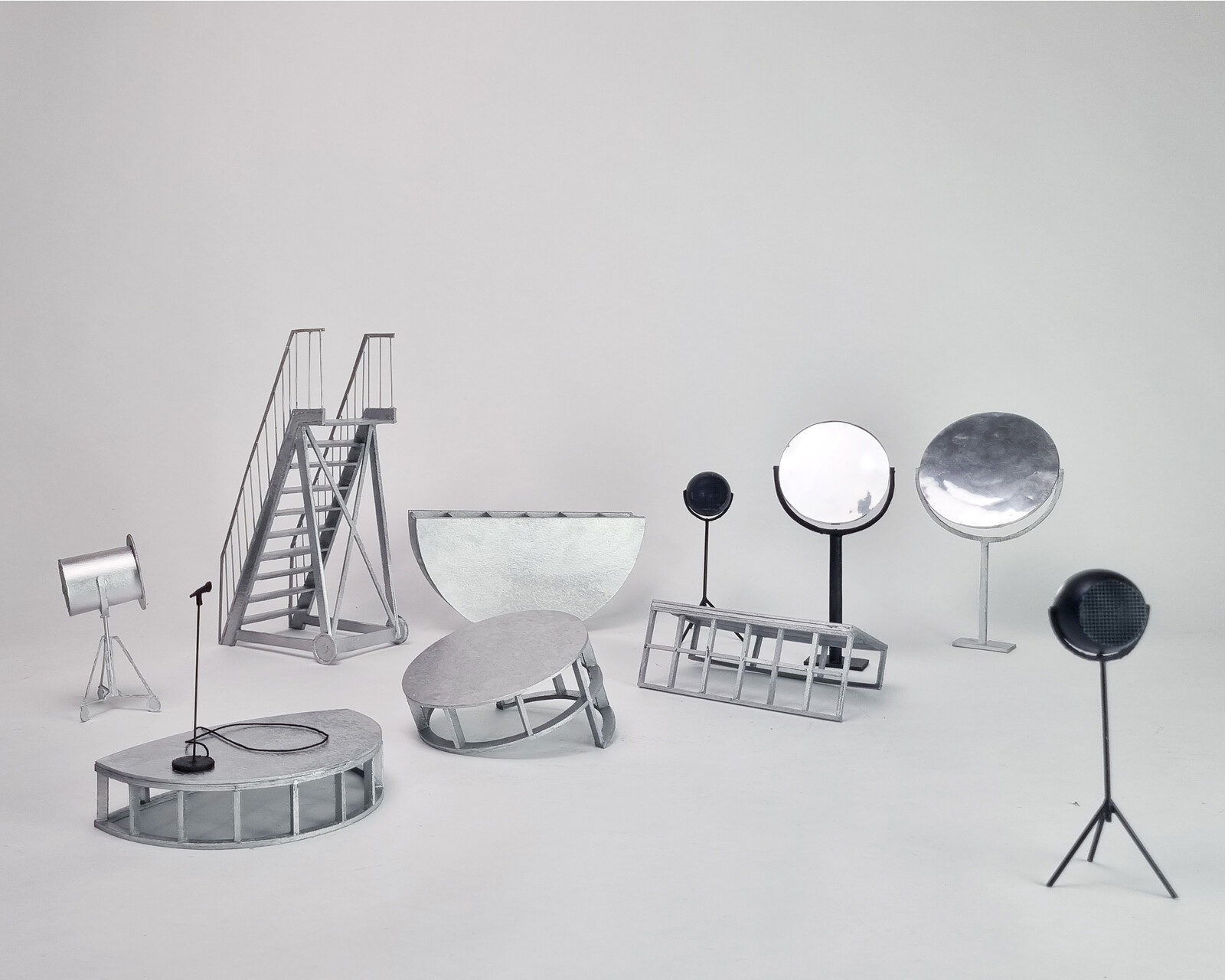May 20–November 26, 2023
Giardini
30100 Venice
Italy
Hours: Tuesday–Sunday 10am–6pm
info@institutfrancais.com
With Muoto (Gilles Delalex, Yves Moreau), Georgi Stanishev, Jos Auzende, Clémence la Sagna, and Anna Tardivel.
For its participation at the 18th International Venice Architecture Biennale through its national pavilion, France—under the coordination of the Institut français, with the partnership of the French Minister for Europe and Foreign Affairs and Minister of Culture—chose to be represented by the project Ball Theater.
Ball Theater is a project by Gilles Delalex and Yves Moreau (Muoto) and Georgi Stanishev as lead curators, Jos Auzende as associate curator, Clémence La Sagna and Georgi Stanishev for the scenography and Anna Tardivel for the programming.
The Ball Theater is an installation designed to reawaken our desires for utopia. Its hemispherical shape elicits multiple images. It can be interpreted equally as a terrestrial globe or as a mirror ball, a kitsch icon of an era when partying was still possible. This party aura suggests a new approach to today’s crises, one in which the emphasis is no longer on emergency, but on the possibility of alternative futures. This is enacted in the theater for the duration of the Biennale by an alternation between moments of contemplation and immersion in a landscape of sound echoing with foreign and far-off voices, and periods of intense occupancy in the form of variations on the theme of the “ball,” an interplay of workshops-residences between artists, researchers and students.
The architecture of the theater stands midway between structure and setting. The purpose of this scenographic dimension is—like in a real theater—to accommodate a stage, its performers and an audience. What it projects is nevertheless ambivalent, juxtaposing images as contradictory as the futuristic capsule and the primitive hut. In this way, it reflects our contrasting feelings of hope and nostalgia. Our desire to rebuild a future that belongs to the past by recycling a host of found objects.
As a result, the theater experience raises more questions than it answers. What is the origin of this demi-sphere? Who lives in it? What is it for? How did it get there? What are the shards of voices, whispers and radiophonic interferences emanating from its loudspeakers telling us? Has it just landed or is it about to take off? These are the questions that we ask ourselves in an uncertain world: should we land or take off? Should we get close to things, create new communities, erase distances and distinctions, or conversely withdraw and remain aloof? How to choose? How to reinvent our relationship to this world in its quest of a future?
The installation is complemented by a photo novel conceived and imagined by the illustrator Ugo Bienvenu. The novel emphasises the installation’s fictional side by retracing the story and odyssey of the demi-sphere in the landscape of an abandoned city now inhabited only by children and robots. It reveals how it was built, the origin of the objects that surround it and its future destinations.
Opening ball
“You betta talk to me nice,” le bal interlope, May 17–19
By Vinii Revlon, with Mariana Benenge and Missy NRC, dancers of House of Revlon and by Tata Foxie and la Déliche
The Ball Theater gets the ball rolling with a dual tribute to the history of “interloper balls” and voguing as utopian spaces of emancipation. In reaction to the homophobia and racism of 1930s American society, the African-American and Latino communities created their own ballroom scene. A mix of fashion parade, dance competition and performance, it was a place where people could feel free to express who they truly were. In a similar movement, in early 20th-century Paris, carnivals and so-called interloper balls enlivened the city’s “queer” scene. In the 21st century, we call this the drag scene.
Press inquiries and further information
Clara Coustillac, clara [at] annesamson.com / T+33 (0)6 58 93 63 06,
Aymone Faivre, aymone [at] annesamson.com / T+33 (0) 1 40 36 84 32








